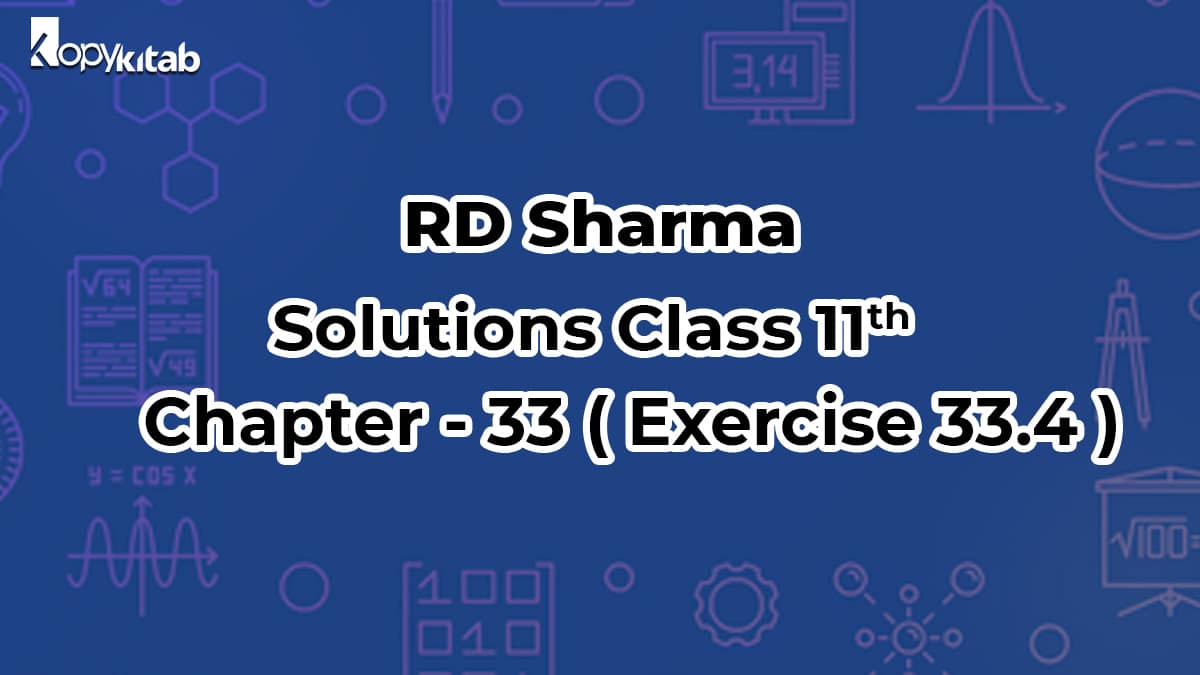
RD Sharma Solutions Class 11 Maths Chapter 33 Exercise 33.4: Until now, we’ve computed the likelihood of an event occurring or not occurring using the favourable and total number of elementary events. The RD Sharma Class 11 Solutions are described in simple language by topic experts to assist students in improving their analytical thinking and problem-solving abilities. RD Sharma Solutions Class 11 Maths Chapter 33 Exercise 33.4 pdf can be downloaded for free to help students improve their exam preparation and score higher on their board exams.
Download RD Sharma Class 11 Solutions Chapter 33 Probability Exercise 33.4 Free PDF
RD Sharma Solutions Class 11 Maths Chapter 33 Exercise 33.4
Access RD Sharma Solutions Class 11 Maths Chapter 33 Exercise 33.4- Important Question with Answers
1. (a) If A and B be mutually exclusive events associated with a random experiment such that P (A) = 0.4 and P (B) = 0.5, then find:
(i) P(A ∪ B)

Solution:
Given: A and B are two mutually exclusive events.
P (A) = 0.4 and P (B) = 0.5
By definition of mutually exclusive events we know that:
P (A ∪ B) = P (A) + P (B)
Now, we have to find
(i) P (A ∪ B) = P (A) + P (B) = 0.5 + 0.4 = 0.9
(ii) P (A′ ∩ B′) = P (A ∪ B)′ {using De Morgan’s Law}
P (A′ ∩ B′) = 1 – P (A ∪ B)
= 1 – 0.9
= 0.1
(iii) P (A′ ∩ B) [This indicates only the part which is common with B and not A.
Hence this indicates only B]
P (only B) = P (B) – P (A ∩ B)
As A and B are mutually exclusive so they don’t have any common parts.
P (A ∩ B) = 0
∴ P (A′ ∩ B) = P (B) = 0.5
(iv) P (A ∩ B′) [This indicates only the part which is common with A and not B.
Hence this indicates only A]
P (only A) = P (A) – P (A ∩ B)
As A and B are mutually exclusive so they don’t have any common parts.
P (A ∩ B) = 0
∴ P (A ∩ B′) = P (A) = 0.4
(b) A and B are two events such that P (A) = 0.54, P (B) = 0.69 and P (A ∩ B) = 0.35. Find (i) P (A ∪ B)

Solution:
Given: A and B are two events.
P (A) = 0.54, P (B) = 0.69 and P (A ∩ B) = 0.35
By definition of P (A or B) under the axiomatic approach we know that:
P (A ∪ B) = P (A) + P (B) – P (A ∩ B)
Now we have to find:
(i) P (A ∪ B) = P (A) + P (B) – P (A ∩ B)
= 0.54 + 0.69 – 0.35
= 0.88
(ii) P (A′ ∩ B′) = P (A ∪ B)′ {using De Morgan’s Law}
P (A′ ∩ B′) = 1 – P (A ∪ B)
= 1 – 0.88
= 0.12
(iii) P (A ∩ B′) [This indicates only the part which is common with A and not B.
Hence this indicates only A]
P (only A) = P (A) – P (A ∩ B)
∴ P (A ∩ B′) = P (A) – P (A ∩ B)
= 0.54 – 0.35
= 0.19
(iv) P (A′ ∩ B) [This indicates only the part which is common with B and not A.
Hence this indicates only B]
P (only B) = P (B) – P (A ∩ B)
∴ P (A′ ∩ B) = P (B) – P (A ∩ B)
= 0.69 – 0.35
= 0.34
(c) Fill in the blanks in the following table:

Solution:
(i) By definition of P (A or B) under axiomatic approach we know that:
P (A ∪ B) = P (A) + P (B) – P (A ∩ B)
By using data from table, we get:
∴ P (A ∪ B) = 1/3 + 1/5 – 1/15
= 8/15 – 1/15
= 7/15
(ii) By definition of P (A or B) under axiomatic approach we know that:
P (A ∪ B) = P (A) + P (B) – P (A ∩ B)
P (B) = P (A ∪ B) + P (A ∩ B) – P (A)
By using data from table, we get:
∴ P (B) = 0.6 + 0.25 – 0.35
= 0.5
(iii) By definition of P (A or B) under axiomatic approach we know that:
P (A ∪ B) = P (A) + P (B) – P (A ∩ B)
P (A ∩ B) = P (B) + P (A) – P (A ∪ B)
By using data from table, we get:
∴ P (A ∩ B) = 0.5 + 0.35 – 0.7
= 0.15
Hence the table is:

2. If A and B are two events associated with a random experiment such that P (A) = 0.3, P (B) = 0.4 and P (A ∪ B) = 0.5, find P (A ∩ B).
Solution:
Given: A and B are two events.
P (A) = 0.3, P (B) = 0.5 and P (A ∪ B) = 0.5
Now we need to find P (A ∩ B).
By definition of P (A or B) under axiomatic approach (also called addition theorem) we know that:
P (A ∪ B) = P (A) + P (B) – P (A ∩ B)
So, P (A ∩ B) = P (A) + P (B) – P (A ∪ B)
P (A ∩ B) = 0.3 + 0.4 – 0.5
= 0.7 – 0.5
= 0.2
∴ P (A ∩ B) is 0.2
3. If A and B are two events associated with a random experiment such that P (A) = 0.5, P (B) = 0.3 and P (A ∩ B) = 0.2, find P (A ∪ B).
Solution:
Given: A and B are two events.
P (A) = 0.5, P (B) = 0.3 and P (A ∩ B) = 0.2
Now we need to find P (A ∪ B).
By definition of P (A or B) under axiomatic approach (also called addition theorem) we know that:
P (A ∪ B) = P (A) + P (B) – P (A ∩ B)
So, P (A ∪ B) = P (A) + P (B) – P (A ∩ B)
P (A ∪ B) = 0.5 + 0.3 – 0.2
= 0.8 – 0.2
= 0.6
∴ P (A ∪ B) is 0.6
Probability Ex 33.4 Q5
Probability Ex 33.4 Q6
Probability Ex 33.4 Q7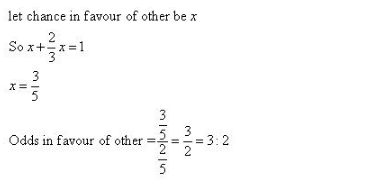
Probability Ex 33.4 Q8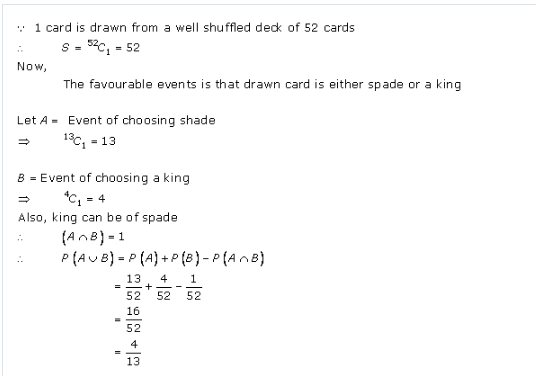
Probability Ex 33.4 Q9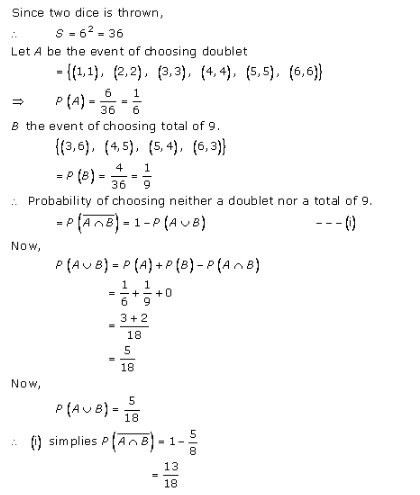
Probability Ex 33.4 Q10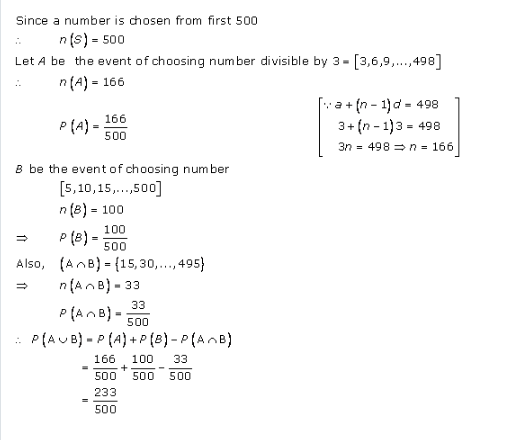
Probability Ex 33.4 Q11
Probability Ex 33.4 Q12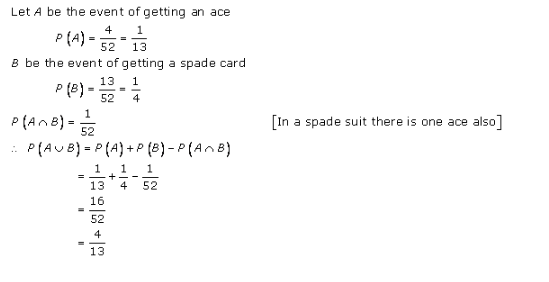
Probability Ex 33.4 Q13
Probability Ex 33.4 Q14
Probability Ex 33.4 Q15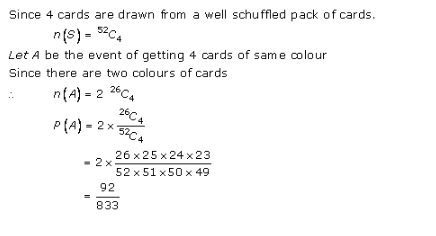
Probability Ex 33.4 Q16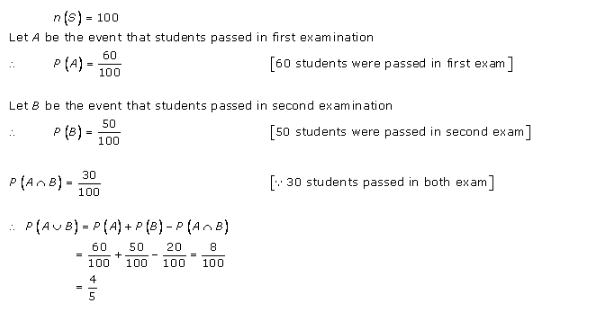
Probability Ex 33.4 Q17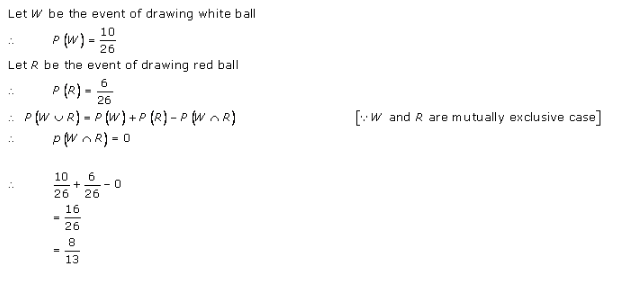
Probability Ex 33.4 Q18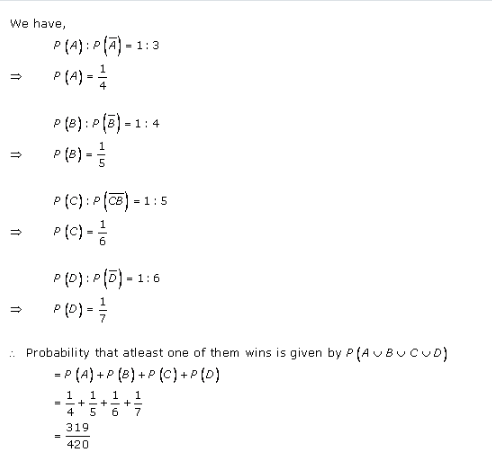
Probability Ex 33.4 Q19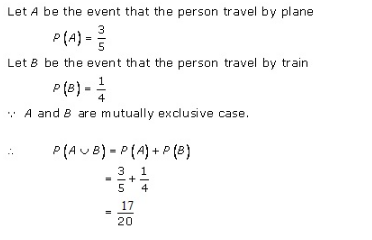
Probability Ex 33.4 Q20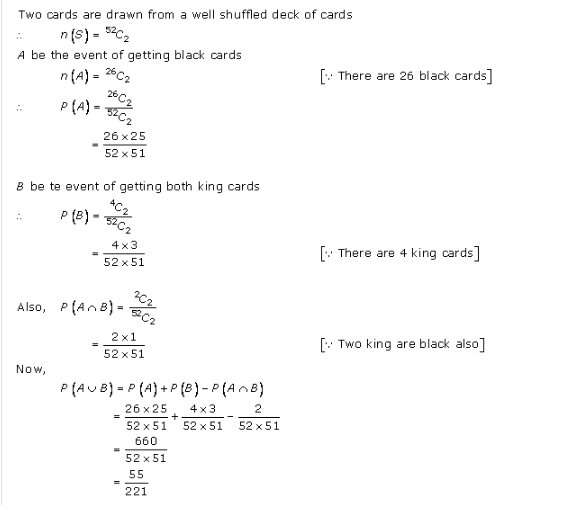
Probability Ex 33.4 Q21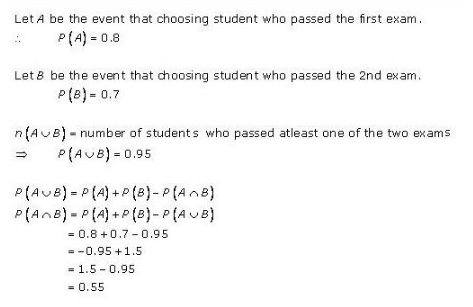
Probability Ex 33.4 Q22
Probability Ex 33.4 Q23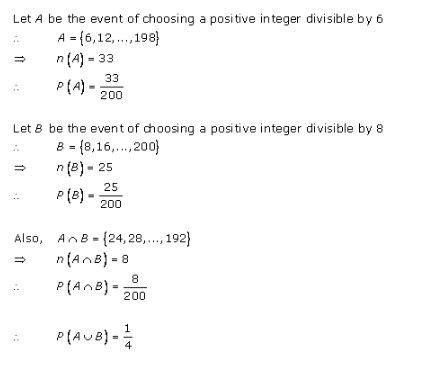
Probability Ex 33.4 Q24
Probability Ex 33.4 Q25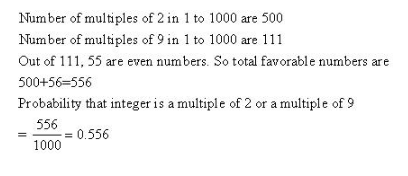
Probability Ex 33.4 Q26
Probability Ex 33.4 Q27
Probability Ex 33.4 Q28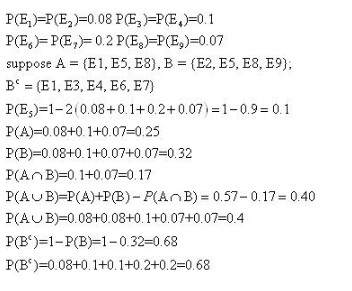
We have provided complete details of RD Sharma Solutions Class 11 Maths Chapter 33 Exercise 33.4. If you have any queries related to CBSE Class 11, feel free to ask us in the comment section below.
FAQs on RD Sharma Solutions Class 11 Maths Chapter 33 Exercise 33.4
How many questions are there in RD Sharma Class 11 Solutions Chapter 33 Statistics Exercise 33.4?
There are a total of 9 questions in RD Sharma Solutions Class 11 Maths Chapter 33 Exercise 33.4.
What are the advantages of using RD Sharma Solutions Class 11 Maths Chapter 33 Exercise 33.4?
Referring to RD Sharma Solutions Class 11 Maths Chapter 33 Exercise 33.4 will provide students a good understanding of the type of questions that might be asked in the Class 11 exam from the chapter.
Where can I download RD Sharma Solutions Class 11 Maths Chapter 33 Exercise 33.4 free PDF?
You can download RD Sharma Class 11 Solutions Chapter 33 Exercise 33.4 free PDF from the above article.
